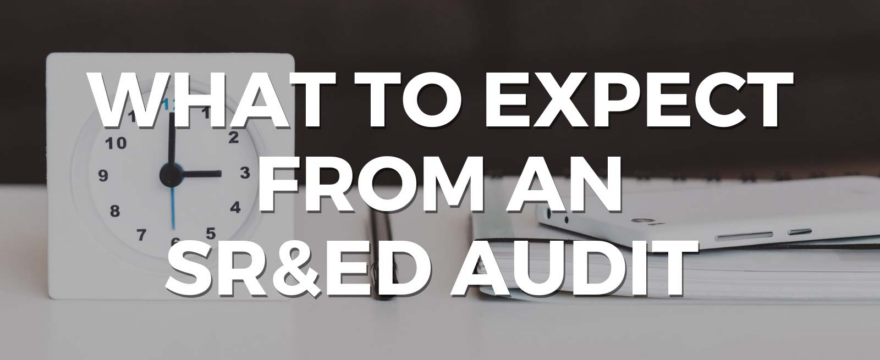
As Canada’s top incentive program for companies that invest in research and development (R&D), the SR&ED program is remarkably valuable for businesses across the nation. While you may be surprised to learn just how much is eligible for reimbursement through SR&ED, it’s essential to do your homework to ensure you have as much information as possible and keep good records of your SR&ED projects. While we’ve covered some of the basics of how to avoid an SR&ED audit in previous articles, below, we take a closer look at what to expect during an audit. Read on to learn more!
Scientific Research and Experimental Development (SR&ED) audits are a standard part of the SR&ED program. In fact, claimants can generally expect to be assessed once every four to five years, regardless of how accurate their past claims are. As the SR&ED program is Canada’s largest source of R&D funding, with more than $3 billion in tax credits distributed annually, this auditing process ensures SR&ED projects adhere to eligibility requirements so that the funds issued align with the program’s mandate.
A Quick Recap on Eligibility
One of the most prevalent causes of SR&ED claim reviews is the failure to understand eligibility requirements. Audits are necessary to ensure the right companies get the right funding and that everyone is held to the same, fair standard. Understanding what qualifies is essential for submitting successful claims in general, but it also helps to protect you against audits in the long run. As a quick reminder, the four main areas evaluated in SR&ED applications are:
- Technological Uncertainty
- Technological Advancement
- Technical Content
- Supporting Documentation
You must create a compelling case that your projects are directly involved in the research or creation of new assets or processes that drive innovation forward and have tangible proof that documents the eligible expenses involved in your projects, including salaries, overhead, and materials consumed.
What Leads to An Audit
While many will assume that an audit is a defacto sign that you’ve done something wrong, the reality is all businesses that claim SR&ED tax credits will most likely be audited at some point, no matter how pristine their claim is. Audits are a sign of due diligence on behalf of the government and help to ensure that the program can operate as intended for the long term.
Many first-time claimants will receive a First-Time Claimant Advisory Service (FTCAS), which connects the company with a CRA officer that will provide guidance and recommendations. It is essential to demonstrate full compliance and cooperation and to be ready to respond to all Requests For Information (RFI). In most cases, companies that are able to respond to an initial request for information in a timely and detailed manner often find their review subsequently closed with the necessary criteria having been resolved. Should you neglect to send in the right material, however, or should the CRA have additional questions, there may be on-site meetings or extra requests for information needed to conclude matters.
What Are the Most Common Causes of a Review?
While many different factors can lead to a review of your claim, some of the most common include:
- Incomplete claims
- Insufficient evidence of R&D expenditures
- Delays in responding to RFIs
- Absent T2 schedules
- Ignoring CRA inquiries
What Does an Audit Mean for My Refund?
One of the biggest fears regarding CRA SR&ED audits is that they will negatively impact your cash flow by either delaying or reducing the size of your expected refund. Claimants can have peace of mind in knowing that audits are treated as an independent occurrence each year, and they are still able to claim in the future even if they have been found “ineligible” in the past. Keeping detailed documentation, listening to the feedback provided by the CRA and building the strongest case possible under SR&ED guidelines allow you to move forward with a solid foundation and move on from previous reviews with confidence.
Avoid Funding Downtime By Financing Your SR&ED Refund With Easly
The SR&ED Program offers generous support to Canada’s R&D sector, but it does come with one downside: a relatively significant wait time. In the case of claimants that are not audited, funds can take weeks or even months to arrive, and for those who are subject to an audit, this period can be significantly extended by up to 365 days. For those that are in need of interim capital solutions, financing your SR&ED refund with the help of a trusted partner like Easly is a streamlined way to cover R&D now without having to worry about drowning in expenses.
Easly has deployed over $130 million in advances to SR&ED claimants across Canada. You can receive your first advance in as little as two weeks after applying.
To learn more about the role of SR&ED refund financing in your company’s capital-raising efforts, contact Easly today!
.png)
.png)
.png)
